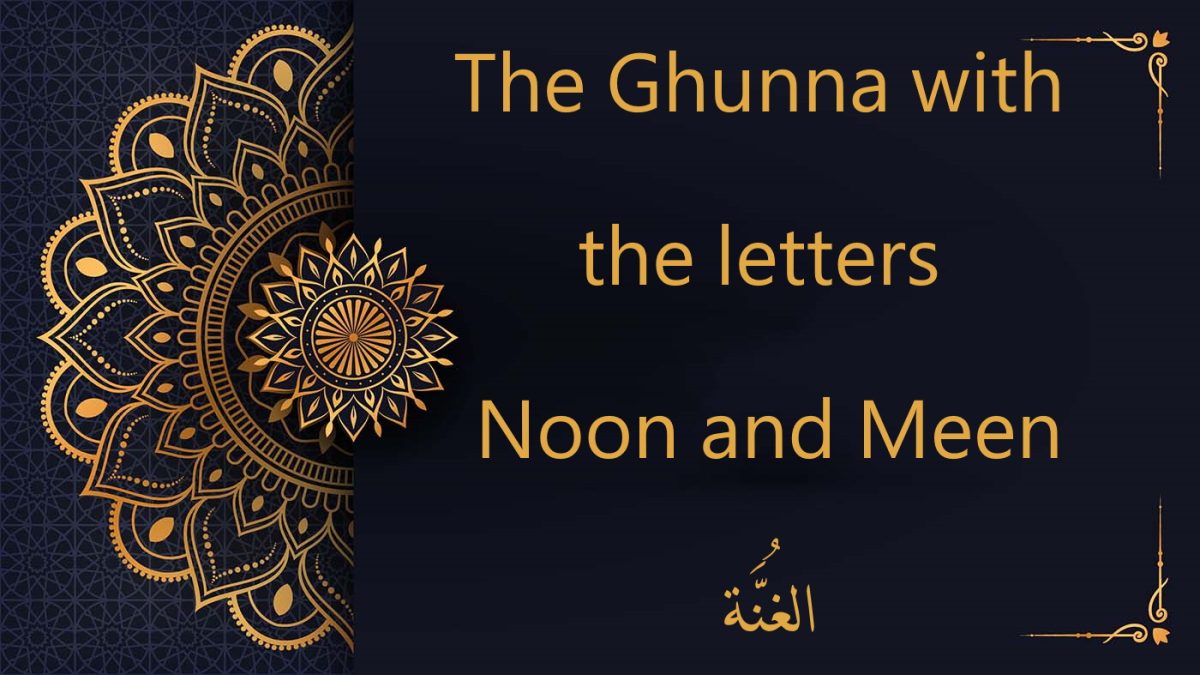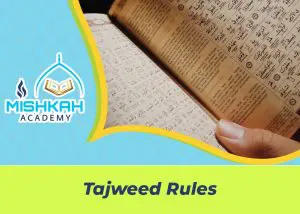Ghunnah In Tajweed
Table of Contents
ToggleOne of the main benefits of learning the Qur’an with Tajweed is mentioned in the hadith of the Prophet “Those who can recite the Qur’an accurately and precisely will attain the highest ranks in Heaven” because the Holy Qur’an is the only book that its recitation is considered a form of worship with great reward. No other book or letter fits this description.
It is expected of every Muslim to read the Qur’an correctly as much as he can and in the correct way that was revealed to our Holy Prophet. Moving on to the article, we will study all the rules of Mim Sakina to the best of our ability.
Allah The Almighty said:
“And recite the Qur’an with a chant”, i.e., do not rush to read the Qur’an, but rather read it slowly and clearly while reflecting on the meanings.
Messenger of Allah (PBUH) said:
“The one who is proficient with the Qur’an will be with the noble and righteous scribes (the angels), and the one who reads it and stumbles over it, finding it difficult, will have two rewards.”
Ibn Al-Jazari also “Most Famous Tajweed Scholar” said:
“The practical application of Tajweed is without doubt compulsory. Who does not read the Quran correctly is a sinner”.
Before we shed light on Ghunnah Rules and dive into the practice comprehension of its rules, it is also recommended to read the Great Benefits Of Learning Tajweed, as they are also very important an crucial.
We also need to explain why these conditions are known and applied while reciting the Holy Quran. As we know, reading the Qur’an well means reading it correctly according to the rules of Tajweed.
God Almighty revealed the Noble Qur’an to our Prophet Muhammad in this form (Tajweed) and commanded him to recite its verses, meditate on their meanings, understand their meanings, and beautify their recitation to be different and distinct from other textual readings.
Hence, Learning Tajweed Rules, including Ghunnah, a priority and giving it its dues effort and time is of great importance. Also, understanding our responsibilities so that we can receive his mercy is of our greatest duties.
Before we clarify the Rules Of Ghunnah, check this inspiring article to know How To Learn Tajweed Online and apply its rules when reciting the Holy Quran.
Join thousands of Muslim Families who love learning Quran, Arabic and Islamic Studies from the comfort of their Homes.
Learn Quran, Arabic & Islamic Online
Join Best Online Tajweed Course
In Sha Allah in this article, we will cover Ghunnah Rules which is on of the techniques used to recite the Quran with proper tajweed rules. So, if you wish to know what is Ghunnah in Tajweed, keep reading this post!
What Is Ghunna In Tajweed
Ghunnah In Tajweed: is a sound produced entirely from the nose (nasal passage). It is almost a sound like a hmm. This sound has average duration of 2 counts. If you find a Shaddah sign above the noon (نون) or Meem (ميم) you have to sound a Ghunnah.
Ghunna Meaning In English
Ghunnah in English means a nasalized sound of the Arabic letter ن, even if it is a Tanween and the م. This indicates that it is an inherent sound in the ن and م whether they have a vowel or not. Knowing how and when to produces this sound is essential in order to read Quran with tajweed rules correctly.
What Is Ghunnah In Arabic
Linguistically: is a sound generated from the nasal passage without using the tongue, which is the sound emitted through the nose, specifically when pronouncing the letters Noon نون and Meem ميم . If you close the opening of the nostril you will not be able to produce the Ghunnah sounds.
Ghunnah Letters Arabic
There are 29 letters in Arabic. Of these 29 letters 2 are Gunnah letters: (Meem) and (noon) , they will give a nasal-humming sound (keeping the sound inside the nose for 2 seconds). Ghunnah letters in Arabic are ن and م, where ن (noon) includes a Tanween which occurs when any Tanween or oon Saakinah is followed by any of Ghunnah Rules.
How To Make Ghunnah
Ghunna is present in the letters “م” and “ن”. So whenever pronounce any of these 2 letters the sound will go into the nasal passage which is known as Ghunna. Whenever the letter “م” or “ن” has a shadda, we pronounce the letter with a strong ghunna for 2 counts.
Types Of Ghunnah
1- Most Complete (أكمل) – and it is the longest Ghunnah found in (ن) and (م) and it has a shadda or in combination with a Ghunnah if one of these two letters (ن م ي و) is preceded by a noun sakinah or tanween.
2- Complete (كاملة) – It is the second longest vocal found in true concealment, labial concealment, and inversion.
3- Incomplete (ناقصة) – Also called short Ghunnah, it is shorter in timing than full timing. This type was found during the recitation of (ن) and (م) (above it is Sukoon) with blossoms.
4- Most Incomplete (أنقص) – is the shortest of all that is found when reciting (ن) and (م) with vowels. You can see the difference between these degrees is the time of these types of Ghunnah, and this difference in timing is very small.
You May Like To Read
10 Benefits Of Memorizing Quran
10 Benefits Of Learning Quran Online
Recommended Courses
Final Words
In order to learn the Quran with Tajweed rules and make noticeable progress, it is necessary to practice the above rules. If you want to delve deeper into the rules of Tajweed, you can join online Tajweed classes. In the curriculum of learning the Qur’an with Tajweed rules, we at Mishkat Academy have made a great effort in order to make learning the Qur’an with Tajweed easier for the online learner. So, We have spared no effort to simplify this task. Check out our Tajweed lessons for a better learning experience.
FAQs
Idgham with Ghunnah examples
Idghaam with Ghunnah or Idghaam bi ghunna in Arabic, happens when any Noon Saakinah or Tanween is followed by any of the Idgham with Ghunnah letters waaw, meem, noon, yaa (ي، ن، م، و). Remember that the ghunnah is a nasalized sound that comes between a hum and a moan.

How many types of Ghunna in Tajweed
There is only one type of Ghunnah, and it includes many rules, you can learn them by registering yourself with a professional teacher to learn Tajweed lessons in the right order and easily.
What is Ghunna in Tajweed
So whenever we pronounce these letters, the sound will go to the nose known as Ghunna. When the letter M or N has a intensity then we pronounce the letter with Ghunnah. This means that we will hold the sound in our nose for two counts.
Where does Ghunnah come from
The vocalization comes out of the nose while the flow of sound is blocked in the mouth (by the tongue in n and the lips in m).
Ghunnah Tajweed Definition
Richness. – Definition: – Linguistically: Ghanna is a sound that resonates inside the nasal cavity. – Term: It is a pleasant sound formed by the adjectives of nun or meme, and the tongue plays no role in pronouncing it.



























